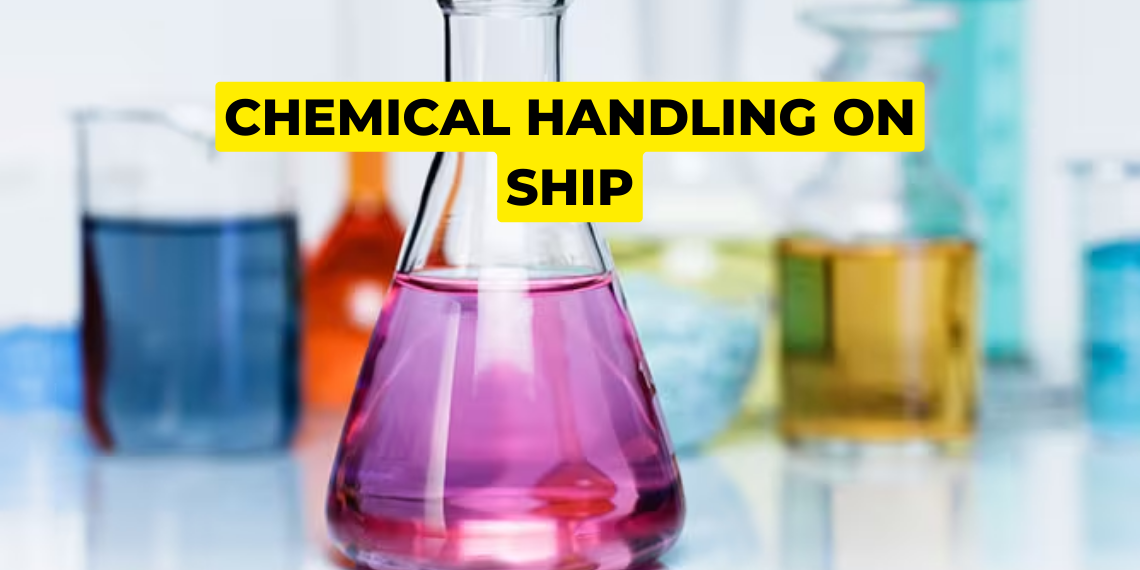Chemical handling on ship | Types of chemicals used in ship | What is Material Safety Data Sheet
What are chemicals?
Chemicals are substances that are made up of molecules or atoms of different elements. They can be found in various forms, including solids, liquids, and gases. Chemical can be natural or synthetic and are used in a variety of applications, including agriculture, manufacturing, medicine, and consumer products.

Chemical can have different properties, such as reactivity, flammability, and toxicity, depending on their composition and molecular structure. Some chemicals are essential for life, such as oxygen, water, and nutrients, while others can be harmful to humans and the environment, such as pollutants, pesticides, and toxic substances.
Chemicals are divided in three categories:
- Acidic chemicals
- Alkaline chemicals
- Neutral chemicals
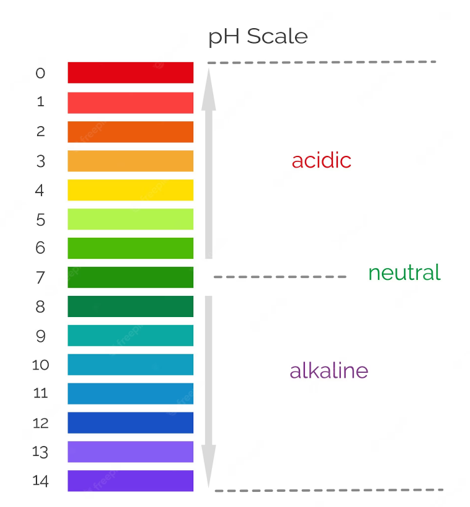
Acidic chemicals:
These chemicals are substances that have a pH value below 7, which means that they have a high concentration of hydrogen ions (H+). Acids can be organic or inorganic compounds that release hydrogen ions when dissolved in water. Some examples of acidic chemical include:
- Hydrochloric acid (HCl)
- Sulfuric acid (H2SO4)
- Nitric acid (HNO3)
- Acetic acid (CH3COOH)
- Citric acid (C6H8O7)
- Carbonic acid (H2CO3)
Acidic chemical have a sour taste and can cause irritation and burning sensations if they come into contact with skin, eyes, or mucous membranes. They also react with bases to form salts and water in a process known as neutralization. The strength of an acid is determined by its pH value, with lower pH values indicating stronger acids.
Alkaline chemicals:
These chemicals, also known as bases, are substances that have a pH value above 7. They have a lower concentration of hydrogen ions (H+) and a higher concentration of hydroxide ions (OH-) than acidic substances. Some examples of alkaline chemicals include:
- Sodium hydroxide (NaOH)
- Potassium hydroxide (KOH)
- Calcium hydroxide (Ca(OH)2)
- Ammonia (NH3)
Alkaline chemical have a bitter taste and a slippery or soapy feel. They can also cause irritation and burns if they come into contact with the skin or eyes. Alkaline chemicals react with acids to form salts and water in a process known as neutralization. The strength of an alkaline chemical is determined by its pH value, with higher pH values indicating stronger bases.
Neutral chemicals:
These chemicals are substances that have a pH value of 7, which means they are neither acidic nor alkaline. They have an equal concentration of hydrogen ions (H+) and hydroxide ions (OH-) in their solution. Some examples of neutral chemical include:
- Distilled water
- Pure ethanol (alcohol)
- Neutral salts like NaCl (table salt)
- KCl (potassium chloride)
Neutral chemicals do not have a sour or bitter taste, and they do not cause irritation or burns on the skin or eyes. They are often used as solvents or diluents for other chemical, and they may be used to stabilize pH values in chemical reactions or industrial processes.
Chemical storage room:
On a ship, it is crucial to ensure the safe storage and handling of chemicals. A chemical storage room is provided where all three types of chemicals are segregated to prevent any accidental mixing. Spillage of chemical is strictly prohibited.
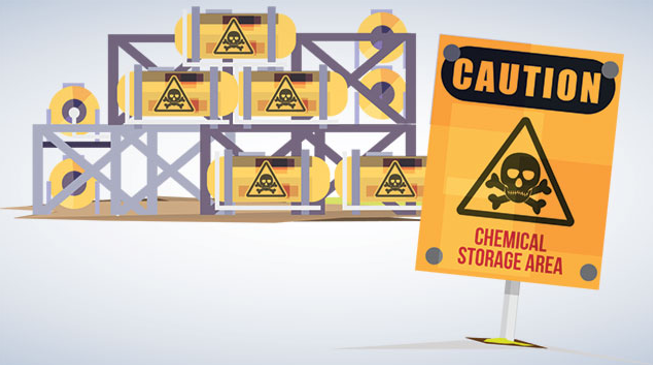
Before using any chemical, individuals must follow a safety checklist to ensure that all proper precautions are taken, such as wearing personal protective equipment, safety goggles, and ensuring that an eye wash station is located near the chemical access room. It is of utmost importance to prioritize safety when handling chemicals on a ship, as there have been past instances where individuals have suffered burns due to lack of caution. By taking these precautions, individuals can ensure the safe use of chemical in their day-to-day activities on the ship.
Why do we need to segregate these chemicals form one another?
We need to segregate acidic chemicals from alkaline chemicals to prevent them from reacting with each other, which can result in potentially dangerous or harmful situations. When acidic and alkaline chemicals are mixed together, they can undergo a chemical reaction called neutralization, where the acid and base cancel each other out to form a salt and water. This process can release a significant amount of heat and can generate toxic fumes or gases, depending on the chemicals involved.
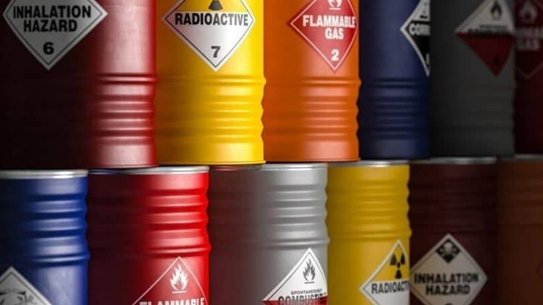
Segregating acidic and alkaline chemicals involves storing them separately in designated areas or containers, and labelling them appropriately with warning signs and symbols to ensure that they are easily identifiable. This helps prevent accidental mixing and reduces the risk of potential hazards. Proper segregation and handling of chemicals are important safety measures that should be followed in all workplaces that deal with hazardous substances.
What is MSDS?
On a ship, MSDS (Material Safety Data Sheet) is provided for every chemical used on board. It contains information about the chemical, such as whether it is acidic or alkaline, how hazardous it is, and what precautions need to be taken in case of spills on skin or in the eyes. The MSDS is readily available near the entrance to the chemical storage area, so that if someone is injured, the person providing assistance can quickly access the sheet and take appropriate action to mitigate the hazard. By having the MSDS available, crew members can take necessary precautions to prevent accidents and ensure the safe use of chemicals on board.
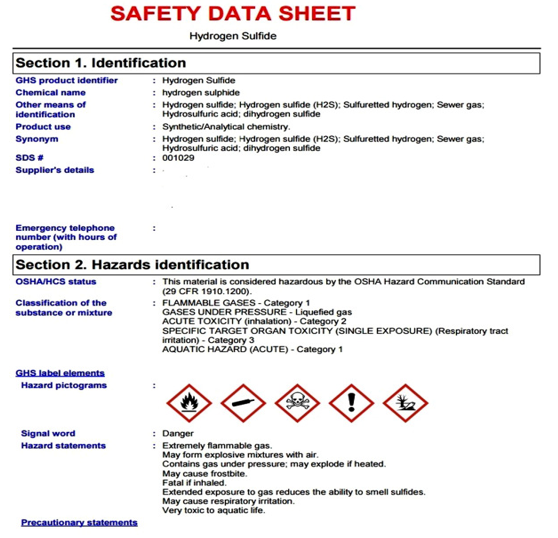
Note:
If you want to learn more about this topic, we suggest checking out our Combo package with the given link https://www.merchantnavydecoded.com/courses/c/ . It’s a great way to dive deeper into the subject through video explanations. This package covers all the important details and presents them in an easy-to-understand format. Watching the videos will help you grasp the topic better and make learning more enjoyable. So, we highly recommend giving our Combo package a try to enhance your knowledge on the subject.
Disclaimer :- The opinions expressed in this article belong solely to the author and may not necessarily reflect those of Merchant Navy Decoded. We cannot guarantee the accuracy of the information provided and disclaim any responsibility for it. Data and visuals used are sourced from publicly available information and may not be authenticated by any regulatory body. Reviews and comments appearing on our blogs represent the opinions of individuals and do not necessarily reflect the views of Merchant Navy Decoded. We are not responsible for any loss or damage resulting from reliance on these reviews or comments.
Reproduction, copying, sharing, or use of the article or images in any form is strictly prohibited without prior permission from both the author and Merchant Navy Decoded.

